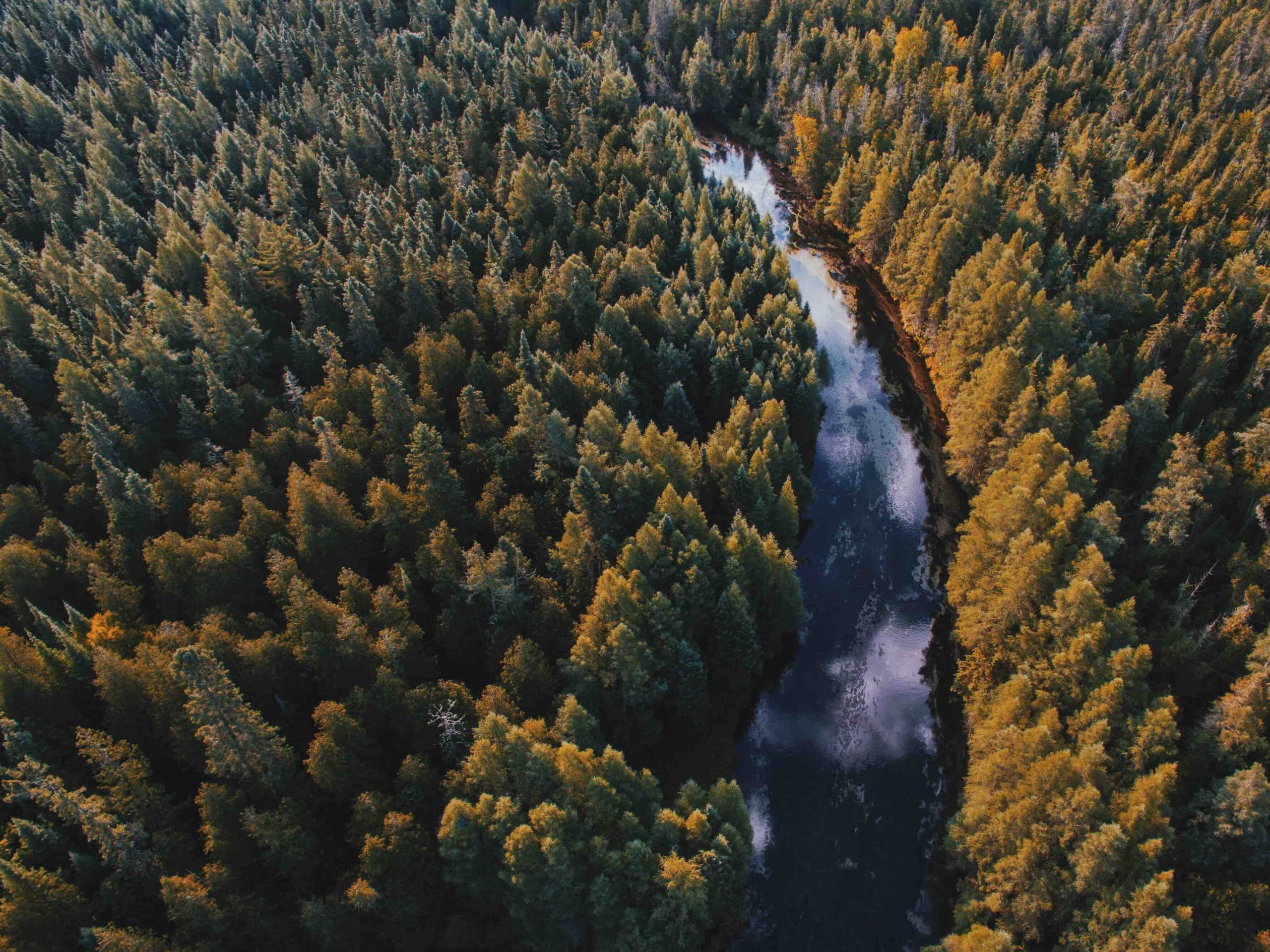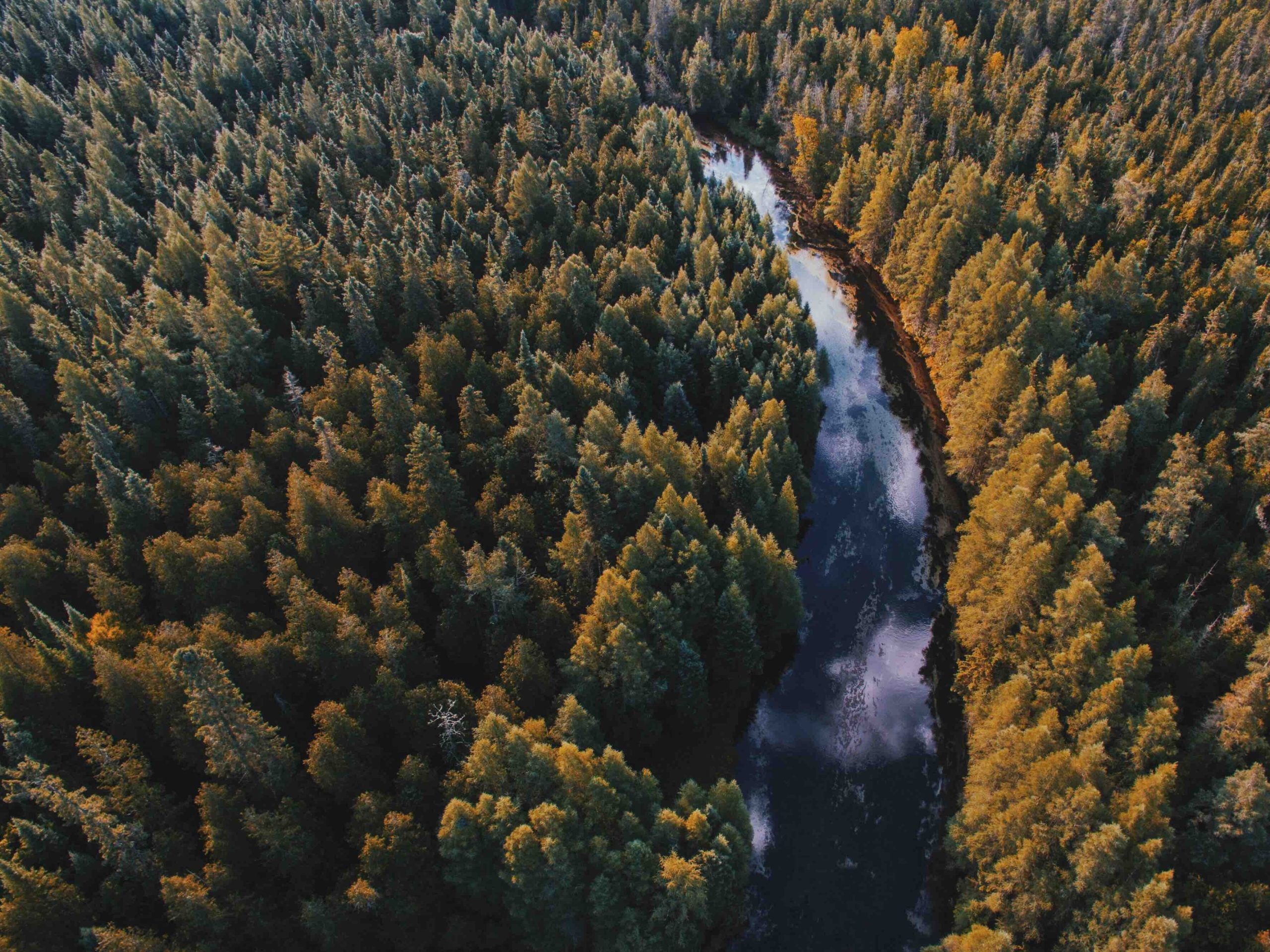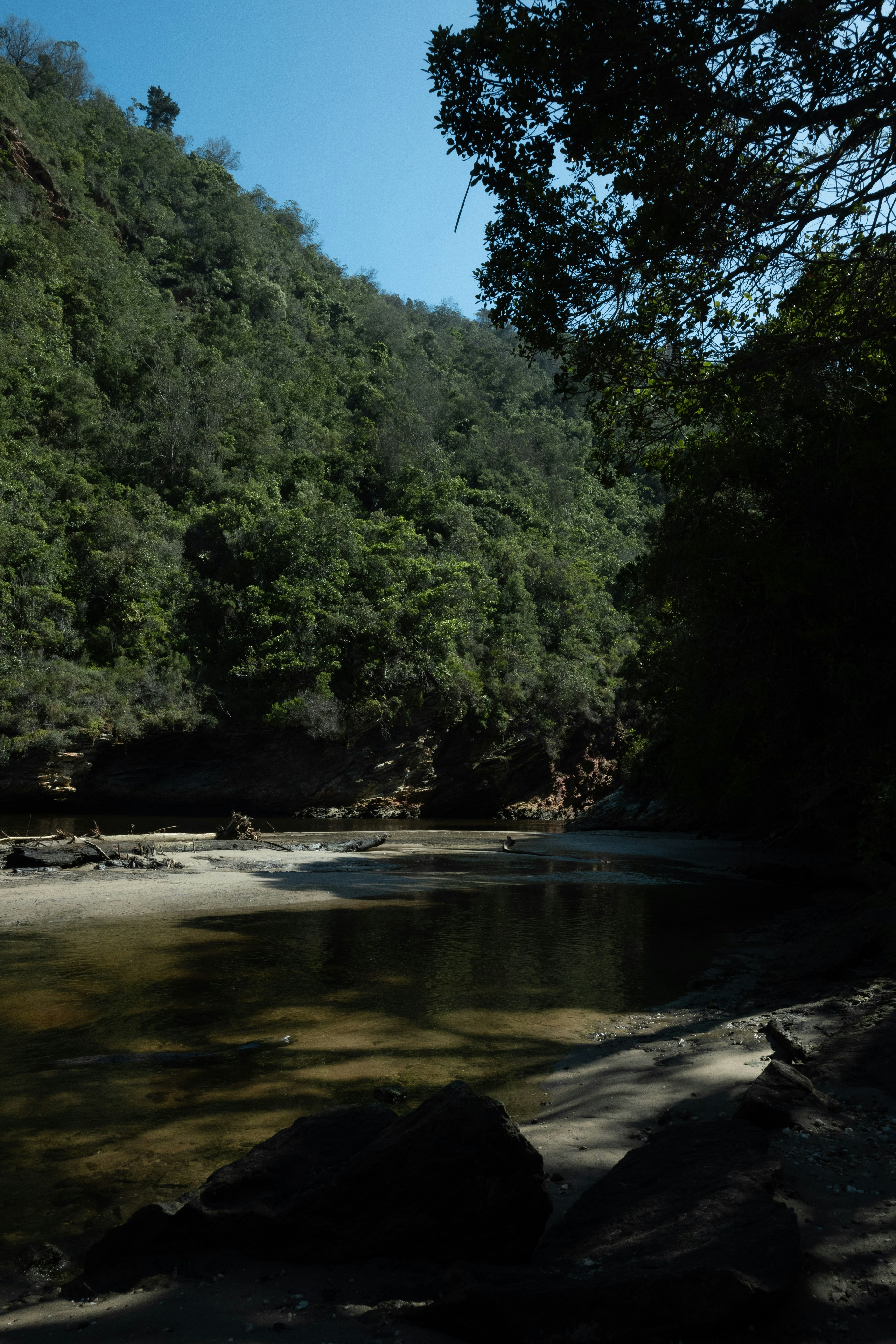Imagine finding yourself surrounded by nothing but the vastness of nature, with no civilization in sight. As enticing as it may seem at first, getting lost in a wilderness area can quickly turn into a daunting situation. The unfamiliarity of your surroundings and the absence of any familiar landmarks can easily leave you feeling disoriented and anxious. So, what steps should you take if you find yourself in this predicament? In this article, we will provide you with some essential tips and guidelines to help you stay calm, stay safe, and find your way back to civilization when lost in a wilderness area.

Stay Calm and Assess Your Situation
Understanding the importance of mental readiness
When you find yourself lost in a wilderness area, it’s crucial to stay calm and assess your situation. Panicking will only cloud your judgment and make it harder to make rational decisions. Take a few deep breaths and remind yourself that you have the skills and knowledge to handle this situation.
Dealing with fear and panic
Fear and panic are natural responses when you realize you’re lost, but it’s important to regain control of your emotions. Remind yourself that panic will not help you find your way back. Take a moment to acknowledge your fear, but then focus on the steps you need to take to ensure your survival.
Rational thinking and decision making
Clear and rational thinking is essential in a survival situation. Take a moment to assess your resources and options. Consider the time of day, weather conditions, and any injuries or health concerns you may have. By thinking objectively, you can develop a plan to increase your chances of being found or finding your own way back.
Establish Your Location
Using natural landmarks
If you’re in an unfamiliar area, identifying natural landmarks can help determine your location. Look for prominent features like mountains, rivers, or distinct rock formations. Take note of these landmarks to help you orient yourself.
Using the sun for direction
The sun can be an invaluable tool for finding direction in the wilderness. Observe where the sun rises and sets, and use this knowledge to establish east and west. By knowing the cardinal directions, you can navigate towards civilization or landmarks that may lead you back to safety.
Use of navigation tools like map, compass, or GPS
If you have a map, compass, or GPS device with you, use them to determine your exact location. Compare your surroundings with the landmarks on the map or input your coordinates into your GPS device. This will give you a more accurate understanding of where you are and how to get back on track.
Understanding your last known location
Reflect on your last known location to gain a better understanding of how you ended up in your current situation. Remember any trails or paths you took, and consider retracing your steps if possible. Knowing where you deviated from your intended route can help you reorient yourself and find your way back more efficiently.
Check Your Supplies
Food and water
Inspect your supplies for food and water. It’s essential to ration your resources to ensure they last until help arrives or you find your way back. Conserve water by drinking small sips instead of gulps, and prioritize high-energy foods to keep your strength up.
Health and medical supplies
Take stock of your medical supplies and assess any injuries or health conditions you may have. Prioritize treating any immediate concerns and ensure you have enough medication or first aid supplies to last until rescue or self-rescue.
Camouflage and protection
Check your gear for appropriate clothing and equipment to protect yourself from the elements. Dress in layers to regulate your body temperature and use camouflage to blend in with your surroundings. This can be helpful if you’re trying to avoid wildlife or stay hidden until help arrives.
Emergency tools
Ensure you have essential emergency tools such as a flashlight, whistle, knife, and signaling devices. These tools can help you attract attention, hunt for food, or navigate through rough terrain if needed. Keep them easily accessible and in good working condition.
Find or Create Shelter
Selecting an appropriate spot
Finding or creating shelter is vital in securing your safety and protecting you from the elements. Look for a spot that offers natural protection, such as a cave, thick vegetation, or the base of a large tree. Avoid areas prone to flooding or landslides.
Using natural resources
Use the resources available in your surroundings to construct your shelter. Gather branches, leaves, and other debris to create a barrier from wind and rain. Utilize large rocks or fallen trees for structural support. Work with what nature provides to build a safe and sturdy shelter.
Insulating for warmth
When building your shelter, consider insulation to help retain body heat. Use leaves, moss, or even the bark of trees to create a layer between yourself and the ground. This insulation will help prevent heat loss and keep you warm throughout the night.
Shielding from elements
Ensure your shelter is positioned to provide the best protection from the elements. Angle the entrance away from prevailing winds and ensure the roof has a slight slope to allow water runoff. By shielding yourself from rain, wind, and extreme temperatures, you increase your chances of survival.
Build a Fire
Choosing a safe area
Select a safe area for building your fire. Clear away any debris that could catch fire and ensure it’s a good distance away from your shelter. Look for a natural fire ring or construct one using rocks to contain the flames.
Gathering firewood
Collect a variety of firewood, ranging from small twigs to larger logs. This will allow you to create a fire that is both sustainable and provides enough heat. Look for dead branches or fallen trees, as these will be your best sources of fuel.
Wind direction considerations
Check the wind direction before starting your fire. This will prevent smoke from blowing directly into your shelter. Position yourself and your fire accordingly to minimize the impact of smoke inhalation.
Maintaining fire throughout the night
Keep your fire going throughout the night to provide warmth, light, and a psychological boost. Continuously feed it with small pieces of firewood to maintain a steady flame. A well-maintained fire can also act as a signal for potential rescuers.
Signal For Help
Creating visible signs for rescue
If you’re unable to move or find your way back, creating visible signs can increase your chances of being rescued. Use rocks, branches, or even brightly colored clothing to form conspicuous symbols or write out distress messages. Make these signs large enough to be seen from a distance.
Use of fire for signaling
Take advantage of your fire to create signals for rescue. Build it up to produce smoke during the day, and at night, break up branches to make crackling noises. These signals can alert potential rescuers to your presence.
Mirrors and reflective items
Carry a mirror or any reflective item in your survival kit. This can be used to catch the attention of passing aircraft or search teams. Reflect the sunlight towards their direction, creating flashes that are more likely to be noticed.
Loud noises and calls
Use your voice or any available tools to produce loud noises that may attract attention. Shout for help or use whistles, horns, or even banging rocks together to create loud sounds. These noises can carry over long distances, increasing your chances of being heard.

Network of Survival: Water, Food, Fire, Shelter
Locating water sources
Finding a reliable water source is crucial for your survival. Look for nearby streams, rivers, or sources of groundwater. If you’re unable to find running water, consider collecting rainwater or dew using natural containers or your own gear.
Yielding for wild food
While waiting for rescue or finding your way back, you’ll need to sustain yourself. Learn how to identify edible plants and search for signs of animal activity. Use simple trapping techniques or forage for insects and small creatures, honing your survival skills to procure food.
Maintaining warmth and comfort via fire
Fire provides more than just warmth; it also boosts morale and offers a sense of security. Keep your fire going to maintain body heat and keep dangerous wildlife at bay. Additionally, a well-lit fire can act as a psychological anchor, reminding you that you are not alone.
Ensuring sound sleep using shelter
Sleep is crucial for maintaining mental and physical strength. Make sure your shelter is secure, comfortable, and well-insulated to provide a restful environment. Minimize disturbances, such as uncomfortable terrain or harsh weather, to ensure you get the rest you need.
Stay Put vs. Self-Rescue
Deciding when to stay and wait
Staying put is generally the best course of action when you’re lost in the wilderness. Moving around aimlessly can increase your chances of getting further disoriented or injured. By staying in one place, you make it easier for potential rescuers to locate you.
Deciding when to move and find a way out
While staying put is ideal, there may be situations where self-rescue is necessary. If you’re not near a popular hiking trail or your last known location, it may be prudent to venture out and try to find your own way back. Evaluate your resources, physical condition, and environmental factors before making this decision.
Energy conservation
Whether you choose to stay put or embark on a self-rescue mission, energy conservation is essential. Pace yourself, avoid unnecessary physical exertion, and prioritize rest and hydration. By conserving your energy, you’ll be better equipped to handle the challenges of survival.
Risks and benefits of both options
Both staying put and self-rescue have their risks and benefits. When deciding on the best course of action, consider factors such as distance, terrain, weather conditions, and your personal capabilities. Weigh the pros and cons carefully to make an informed decision that maximizes your chances of survival.
Deal with Wildlife
Identify potential threats
While encountering wildlife can be a thrilling experience, it’s important to recognize potential threats. Educate yourself on the local wildlife and understand their behaviors. Identify dangerous animals and take appropriate precautions to avoid confrontations.
Recognizing signs of animal presence
Keep a keen eye out for signs of animal presence in your surroundings. Look for tracks, scat, disturbed vegetation, or animal sounds. Awareness of your surroundings can help you stay vigilant and take necessary precautions to prevent dangerous encounters.
Tips to avoid encounters
To minimize the risk of wildlife encounters, take proactive measures. Store food properly, hang it out of reach, and dispose of trash in a secure manner. Make noise while walking to alert animals of your presence, and be cautious around water sources, where animals are likely to congregate.
How to react to wildlife encounters
Despite precautions, there may be instances where you come face-to-face with wildlife. If this happens, remain calm and avoid sudden movements. Make yourself appear larger by raising your arms and slowly backing away. Never turn your back or run, as this may trigger a predatory response. Stand your ground and give the animal a clear escape route.
Returning to Civilization
Locating rescue teams
If you’re unable to find your own way back, it’s crucial to locate rescue teams. Look for common signs of their presence, such as search aircraft, ground search parties, or even the sound of emergency sirens. Position yourself in an open area where you’re more likely to be spotted.
Hints from nature about nearby civilization
Nature often provides subtle hints about nearby civilization. Listen for sounds of traffic or voices, look for cleared paths or trails, or pay attention to unnatural structures like power lines or buildings. Use these cues to guide your movement towards the nearest signs of civilization.
Movement towards water sources
Water sources often act as a natural pathway to civilization. Rivers, streams, or lakes are common features that lead to inhabited areas. Follow water sources downstream or towards areas where you’re more likely to encounter other people.
Planning for next steps post-rescue
Once you’ve been rescued, it’s important to plan your next steps. Assess your physical and mental condition, seek medical attention if necessary, and notify your loved ones of your safety. Reflect on your experience and consider taking wilderness survival courses or acquiring additional skills to prevent future occurrences.
Getting lost in a wilderness area can be a daunting and potentially life-threatening experience, but by staying calm, assessing your situation, and following these guidelines, you can increase your chances of survival. Remember to prioritize your safety, conserve your resources, and stay vigilant. With the right mindset and preparedness, you can navigate through the wilderness and return safely to civilization.


